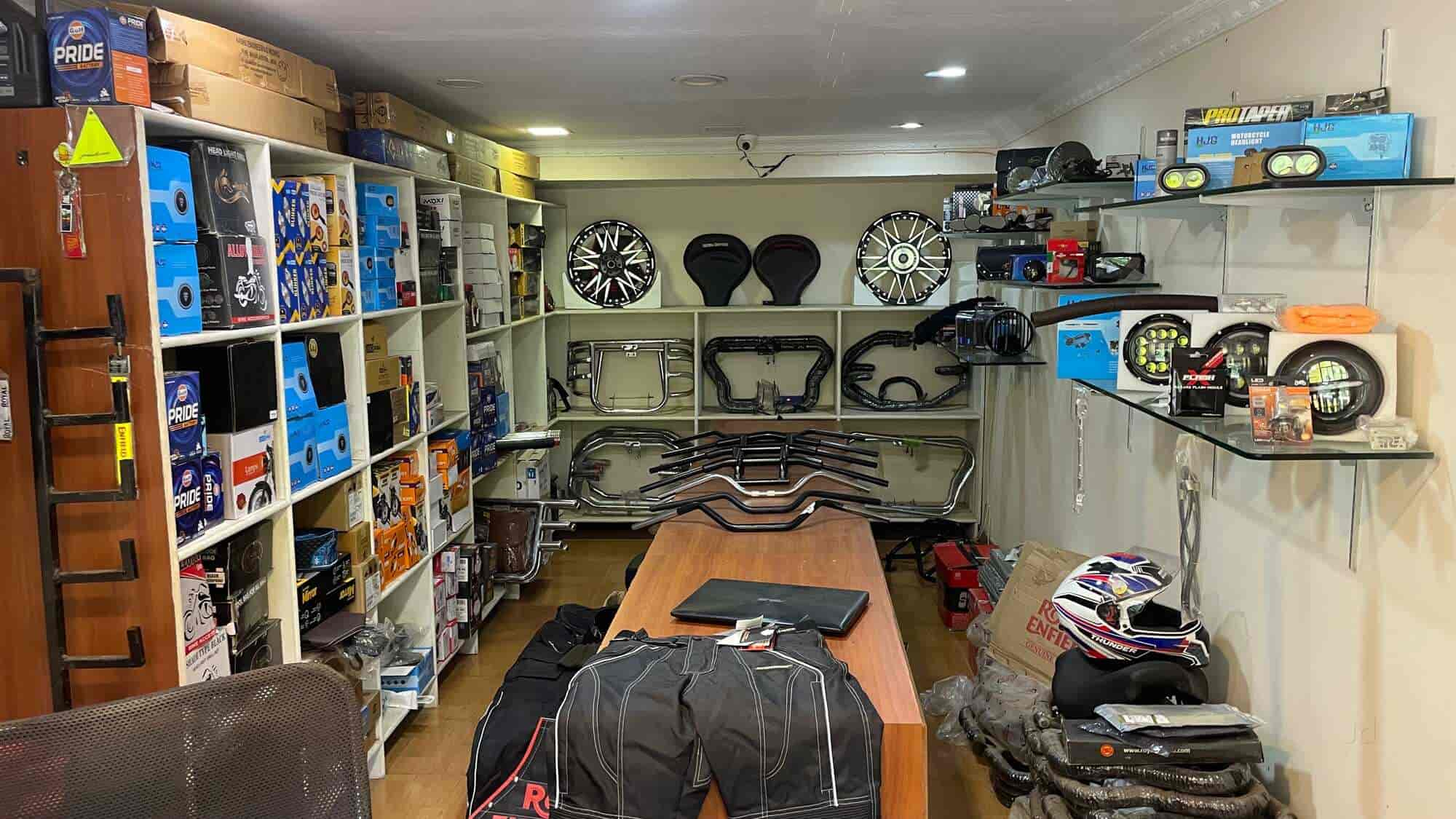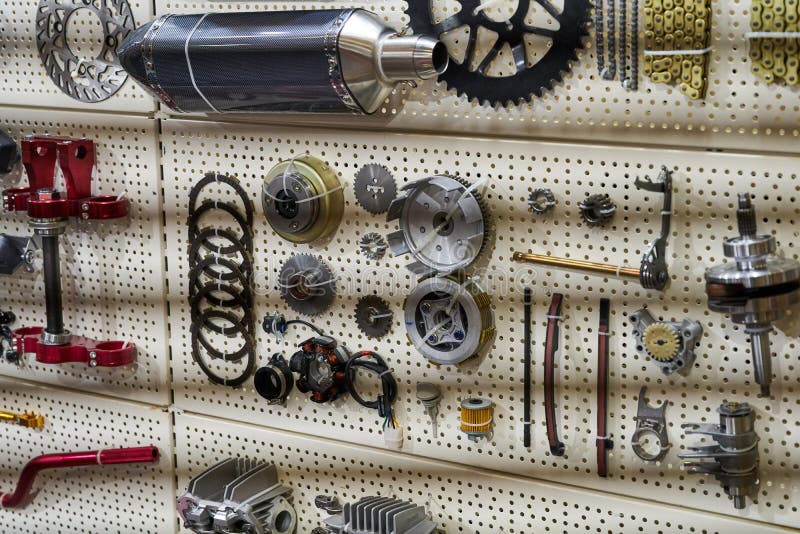Essential Motorcycle Parts NZ for Peak Performance and Safety And Security
Essential Motorcycle Parts NZ for Peak Performance and Safety And Security
Blog Article
Comprehending the Necessary Parts of a Motorbike: A Comprehensive Guide for Lovers
For bike fanatics looking to raise their riding experience and guarantee their bikes run smoothly, comprehending the vital components of a bike is vital. Each component, from the engine's intricate workings to the vital duty of the stopping devices, not just influences efficiency but likewise safety and security and comfort.
Engine Elements

The camshaft plays an essential role in controlling the timing of the engine's shutoffs, guaranteeing the exact opening and closing required for reliable fuel and air consumption, in addition to exhaust expulsion. This timing is vital to keeping optimal engine efficiency and effectiveness. Furthermore, the carburetor or fuel shot system, relying on the motorbike version, is in charge of blending air with gas in the proper ratio for combustion.
The cooling system, either air or liquid-based, works to preserve the engine's temperature level within operational limits, avoiding getting too hot and guaranteeing durability - motorbike shop. Each component, thoroughly made and incorporated, adds to the seamless procedure of the engine, specifying the bike's power output and overall efficiency
Transmission System
Indispensable to the motorcycle's functionality, the transmission system guarantees effective power transfer from the engine to the wheels. This system comprises several crucial elements, consisting of the clutch, transmission, and last drive, each playing an essential duty in translating the engine's power right into motion. The clutch, generally run by a hand lever, serves to engage and disengage the engine from the transmission, permitting smooth gear modifications and controlled acceleration.
The transmission, commonly described as the transmission appropriate, has a set of equipments that motorcyclists can by hand change with to adjust the bike's speed and torque outcome. These gears are prepared in a sequence that allows the motorbike to increase efficiently and preserve optimal engine performance across various rates. The majority of bikes make use of a consecutive gearbox, requiring the motorcyclist to change gears in an established order.
Braking Systems
While understanding the transmission system is essential to utilizing a motorcycle's power, just as crucial is the capacity to manage and stop that power properly, which is where stopping systems enter into play. Brakes are vital for security and performance, giving the cyclist with the needed control to navigate various terrains and problems. Usually, bikes feature two kinds of braking systems: disc brakes and drum brakes.
Disc brakes are much more prevalent in contemporary bikes as a result of their remarkable efficiency. They are composed of a brake disc, caliper, and pads. When activated, the caliper presses the brake pads against the spinning disc, converting kinetic energy right into heat, thus slowing the wheel. This system uses better warm dissipation, regular efficiency, and boosted stopping power, specifically in wet problems.
Conversely, drum brakes, though less usual, are still found in some motorbikes. They function by pressing brake shoes against the internal surface area of a drum attached to the wheel. While normally much less reliable in heat dissipation and stopping power, drum brakes are less complex and much more cost-efficient.
Understanding these braking systems' subtleties permits motorcyclists to preserve their motorcycles effectively and appreciate the engineering that guarantees effective and risk-free stopping.
Suspension and Steering
Suspension and guiding systems are important elements that substantially affect a motorbike's handling and adventure convenience. The shock absorber, including forks at a knockout post the front and shock absorbers at the back, soaks up roadway abnormalities, boosting security and control. Front forks, usually telescopic or inverted, compress and rebound to mitigate effects, while rear shock absorbers preserve tire contact with the road, important for traction and security.
Steering, focused around the handlebars, attaches the cyclist to the bike's directional control. The guiding head bearings ensure smooth operation, allowing specific ability to move. Correct alignment and maintenance of these bearings are essential for foreseeable guiding reaction and minimizing rider exhaustion.
The suspension's adjustability is one more essential aspect; preload, damping, and rebound setups enable customization to fit different riding styles and conditions. This flexibility is crucial for enhancing performance, whether browsing metropolitan roads or dealing with rugged routes. Advancements like digital suspension systems supply real-time modifications, improving experience quality throughout diverse terrains.

Electrical Systems
After making certain a smooth and regulated ride with effective suspension and guiding systems, interest turns to the electric systems, a critical facet of modern motorbikes. These systems play an important duty not only in beginning the engine but also in powering different parts that improve the capability and safety and security of the motorcycle.
At the heart of a motorbike's electric system is the battery, which stores electrical power required for beginning motorcycle supply the engine and powering auxiliary systems - motocross gear nz. The alternator or generator, combined with the rectifier-regulator, makes certain the battery remains charged while the bike functions, transforming mechanical power right into electric energy and maintaining voltage levels
The ignition system, one more important element, is liable for sparking the air-fuel combination in the engine's cyndrical tubes. Modern motorbikes frequently use a digital ignition system, using better effectiveness and integrity contrasted to traditional systems.
Lighting systems, including headlights, tail lights, and signs, are likewise essential, guaranteeing presence and safety and security for the cyclist. Additional digital parts such as sensing units, control units, and displays add to innovative attributes like gas shot monitoring, anti-lock stopping systems (ABDOMINAL MUSCLE), and digital dashboards, even more enhancing the riding experience.
Verdict
A detailed understanding of a bike's crucial elements, consisting of the engine, transmission system, stopping mechanisms, suspension, guiding, and electric systems, is essential for enthusiasts intending to enhance efficiency, convenience, and security. Mastery of these components enables notified choices regarding upkeep and upgrades, ultimately boosting the riding full face visor helmet experience. By integrating this expertise, riders can guarantee their bikes operate at peak efficiency and reliability, consequently maximizing both pleasure and long life of their automobiles.
For motorcycle lovers looking to boost their riding experience and ensure their bikes run efficiently, recognizing the necessary components of a motorbike is extremely important.Indispensable to the motorbike's capability, the transmission system ensures efficient power transfer from the engine to the wheels.While comprehending the transmission system is essential to harnessing a motorcycle's power, similarly crucial is the ability to control and quit that power efficiently, which is where braking systems come right into play. Normally, bikes include 2 types of braking systems: disc brakes and drum brakes.
A complete understanding of a bike's essential elements, consisting of the engine, transmission system, stopping devices, suspension, steering, and electric systems, is crucial for fanatics intending to maximize security, comfort, and performance.
Report this page